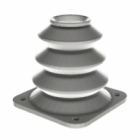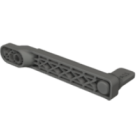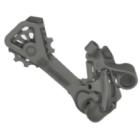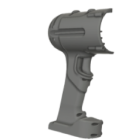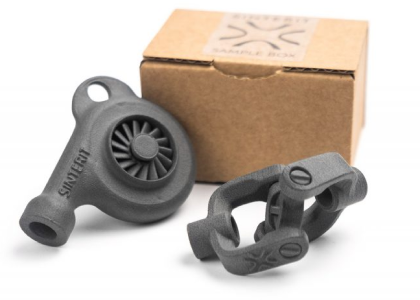What is print 3D? Concept of 3D printing
3D printing, also known as additive manufacturing, is a method of creating physical objects directly from digital designs by adding material layer by layer. This approach is fundamentally different from traditional manufacturing, which typically involves subtracting material (as in CNC machining) or shaping it using molds (as in injection molding).
The key idea here is addition instead of subtraction — the printer only deposits material where it’s needed, following a digital blueprint. This makes the process highly efficient and adaptable, especially for customized or complex parts.
How it works – from digital model to physical object
Every 3D printed part begins as a digital 3D model, typically created using CAD (Computer-Aided Design) software. Once the design is complete, it’s processed by a slicer — a specialized program that divides the model into thin, horizontal layers. The slicer then generates instructions that tell the printer how to build each layer, one at a time.
Using materials like plastic filament, liquid resin, metal powder, or composite blends, the printer constructs the object from the bottom up. Each new layer bonds to the one beneath it, gradually forming the final geometry. The process is highly automated and precise, capable of producing everything from simple prototypes to highly detailed functional parts.
A shift in manufacturing mindset
The true power of 3D printing lies in its ability to turn digital ideas into physical reality without the need for molds, tooling, or assembly lines. It allows for faster development, easier iteration, and far greater freedom in design.
Perhaps most importantly, additive manufacturing flips the traditional logic of production: instead of forcing the design to fit manufacturing constraints, we now have the freedom to let the design lead. This shift is unlocking new levels of creativity, efficiency, and innovation across industries — from engineering and healthcare to fashion and architecture.
Discover how 3D printing is used across industries: click.
Explore also
- What does “3D printed” mean?
- Example of 3D printing
- How does 3D printing work?
- Slicing in 3D printing
- What do you need for 3D printing?
- 3D printing benefits
- Is 3D printer dangerous? Understanding the real risks
- 3D printing issues
- 3D printing history
- 3D printing facts
- Who uses 3D printers? Not just for engineers anymore
- Where 3D printing is used
- 7 common 3D printing myths
- 3D printing global market
- Cultural impact of 3D printing
- Hybrid manufacturing (CNC + AM)
Related categories
 Austria
Austria  Bosnia and Herzegovina
Bosnia and Herzegovina  Bulgaria
Bulgaria  Croatia
Croatia  Czech Republic
Czech Republic  Denmark
Denmark  Estonia
Estonia  Finland
Finland  France
France  Germany
Germany  Greece
Greece  Hungary
Hungary  Ireland
Ireland  Italy
Italy  Latvia
Latvia  Lithuania
Lithuania  Poland
Poland  Portugal
Portugal  Romania
Romania  Slovakia
Slovakia  Slovenia
Slovenia  Spain
Spain  Sweden
Sweden  Switzerland
Switzerland  United Kingdom
United Kingdom  Ukraine
Ukraine  China
China  Hong Kong
Hong Kong  India
India  Israel
Israel  Japan
Japan  Malaysia
Malaysia  Philippines
Philippines  Saudi Arabia
Saudi Arabia  South Korea
South Korea  Taiwan
Taiwan  Thailand
Thailand  Turkey
Turkey  United Arab Emirates
United Arab Emirates  Egypt
Egypt  South Africa
South Africa  Tunisia
Tunisia  Canada
Canada  Mexico
Mexico  United States
United States  Brasil
Brasil  Colombia
Colombia  Australia
Australia  New Zealand
New Zealand 



